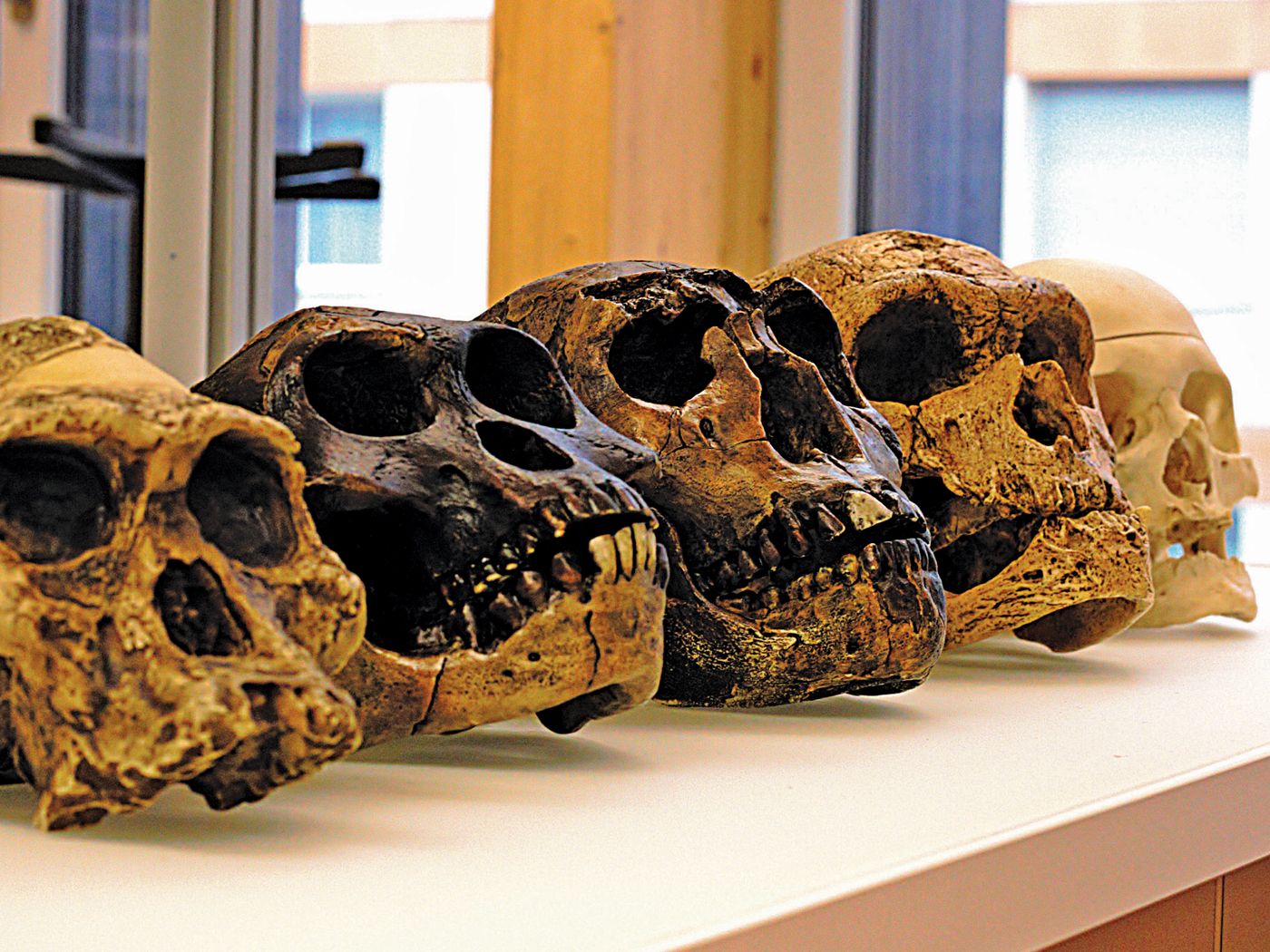There are two popular theories regarding the evolutionary origin of man among evolutionists. One supposes that the Homo erectus type evolved simultaneously in several areas, eventually becoming modern man. They had all descended from Australopithecines, but had maintained enough genetic contact with one another to produce the one species, Homo sapiens.
The other view (there are various opinions within each, of course) is called the "out of Africa" scenario. This idea proposes that while Homo erectus, Neanderthal, and others existed in places around the world, a particular group of humans migrated "out of Africa" some 100,000 to 300,000 years ago, and eliminated or out-competed all others. Even though they were probably interfertile, little mixing is supposed. All humans are thought to have descended from this replacing group.
This view is supported by genetic comparison of all existing human ethnic groups. Of course, the genetic differences are remarkably slight, and all are interfertile. The mitochondrial DNA, passed only from mother to offspring, has been interpreted to point back to one individual mother, as the matriarch of the migrating clan. All humans today go back to this "African Eve." Others were present, but their individual lines died out or merged with hers.
Creationists, as well as many evolutionists, have pointed out the weaknesses in this analytical study, but we would agree that all humans did go back to one woman, the Biblical Eve. While the African Eve idea and the Biblical doctrine are not at all equivalent, creationists are encouraged that secular science is at least thinking in terms of a Biblical vocabulary.
A recent discovery, reported mid-August in newspapers worldwide and in the September National Geographic, consisted of three footprints perhaps made by this hypothetical African Eve. Sure enough they were found in South Africa and dated at 117,000 years old. Assuming the "out of Africa" theory to be correct, the investigators couldn't help wondering if these "right place—right time" prints were hers.
As always, we must separate the data from the interpretation, and certainly from the stories. The prints are fully human, just like yours or mine. They were somewhat small, 8.5" long, thus potentially female. They are impressed into a semi-hardened sand dune, and are so friable they can't be removed, but they show heel, arch, ball, and big toe.
No dating technique exists which can date loose sand or sandstone. Thus the date must be subjective and based on uniformitarian assumptions. The prints were essentially on the surface, exposed as wind and rain had removed topsoil and overlying sand.
Not only are the prints fully human, they are essentially identical to those found in 1978-79 at Laetoli by Mary Leakey. That volcanic stratum, however, was dated at 3.5 million years old, so the prints could not have been human (by evolutionary standards), and so were assigned to Australopithecus, even though the Australopithecus foot looked more like a hand, with opposing thumb.
Modern human footprints, in surface layers—what's the big deal? The big deal is that this evidence is useful to the "out of Africa" faction. It's even more useful when the evidence is clouded by a forced interpretation. Once again the fabricated story can be told that man evolved by natural processes, without being accountable to a Creator-God. And they consider that a big deal!
* Dr. John Morris is President of ICR.
Cite this article: Morris, J. 1997. Did the African Eve Leave Footprints? Acts & Facts. 26 (10).



















